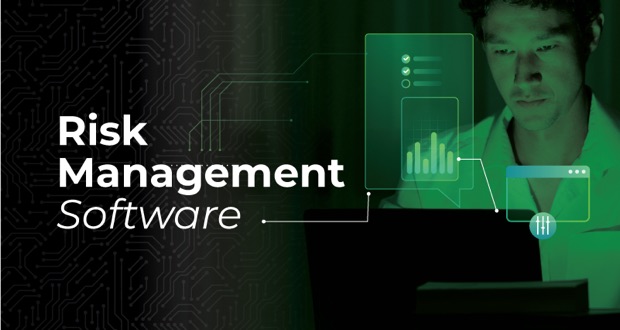The Evolution of Risk Management
Reactive Risk Management
Traditionally, risk management was primarily reactive. Organizations would identify risks only after they had materialized, leading to costly consequences. Reactive risk management relied on manual processes, spreadsheets, and retrospective analysis. Decision-makers would scramble to mitigate the damage caused by unforeseen events such as financial crises, natural disasters, or cybersecurity breaches.
The Need for Proactive Risk Management
Recognizing the limitations of reactive approaches, forward-thinking businesses shifted their focus toward proactive risk management. Proactivity involves anticipating risks, assessing their potential impact, and implementing preventive measures. Here are some reasons why proactive risk management is crucial:
- Risk Prevention: By identifying risks early, organizations can take preventive actions to minimize their impact. For instance, implementing robust cybersecurity measures can prevent data breaches and protect sensitive information.
- Strategic Decision-Making: Proactive risk management enables informed decision-making. Executives can allocate resources effectively, prioritize initiatives, and align risk management with overall business goals.
- Competitive Advantage: Businesses that proactively manage risks gain a competitive edge. They can adapt swiftly to changing market conditions, regulatory requirements, and technological advancements.
Key Features of Risk Management Software
Risk Identification and Assessment is a fundamental component of risk management software. It enables companies to proactively identify and evaluate potential risks and vulnerabilities in their operations or strategies. For instance, banking risk management software can efficiently identify and assess credit risk, market risk, and operational risk, helping banks to make informed decisions and maintain regulatory compliance.
Real-time Monitoring provided by risk management software enables businesses to keep track of risks continuously and dynamically, allowing for timely responses to any changes or developments. For instance, financial risk management software helps businesses monitor their financial risks, such as fluctuations in exchange rates, interest rates, or commodity prices, in real-time.
Integration and Collaboration features in risk management software ensure seamless communication and coordination across different departments or units in an organization. For example, supplier risk management software can facilitate collaboration between procurement, operations, and finance departments to effectively manage supplier-related risks.
Scenario Modeling is another significant feature of risk management software. It enables businesses to simulate various risk scenarios and analyze their potential impacts, thereby enhancing their decision-making and strategic planning. For instance, third-party risk management software can help businesses model scenarios related to their third-party relationships, such as changes in market conditions or regulatory requirements that could affect their third-party risks.
In conclusion, risk management software solutions offer a proactive approach to managing risks, helping businesses anticipate and manage potential threats more effectively. As the business environment continues to evolve, the role of these solutions will become increasingly important in driving business success and sustainability.
Types of Risk Management Software
In addition to the key features discussed earlier, let’s explore the different types of risk management software that cater to specific organizational needs:
A. Enterprise Risk Management (ERM) Software
Enterprise Risk Management (ERM) software provides a comprehensive approach to managing risks across an entire organization. It integrates risk assessment, mitigation, and reporting into a unified system. Here are some key aspects of ERM software:
- Risk Aggregation: ERM software consolidates risks from various business units, departments, and subsidiaries. It creates a holistic view of the organization’s risk landscape.
- Risk Appetite Framework: ERM tools allow organizations to define their risk appetite and tolerance levels. This ensures alignment with strategic objectives.
- Scenario Analysis: ERM software enables scenario modeling to assess the impact of different risk events on the organization as a whole.
B. Third-Party Risk Management Software
Third-Party Risk Management (TPRM) software focuses on assessing and mitigating risks associated with external vendors, suppliers, and partners. Organizations rely on third parties for various services, and TPRM software helps manage these relationships effectively:
- Vendor Due Diligence: TPRM tools automate due diligence processes, evaluating the financial stability, compliance, and cybersecurity practices of third-party vendors.
- Contractual Risk Management: TPRM software tracks contract terms, service-level agreements, and risk-related clauses.
- Continuous Monitoring: Organizations use TPRM tools to monitor third-party performance and detect any emerging risks.
C. Credit Risk Management Software
Credit Risk Management software is essential for financial institutions, especially banks and lending organizations. It focuses on assessing the creditworthiness of borrowers and managing credit portfolios:
- Credit Scoring Models: These models evaluate the credit risk associated with individual borrowers. They consider factors such as credit history, income, and debt-to-income ratio.
- Portfolio Optimization: Credit risk management software helps banks optimize their loan portfolios by balancing risk and return.
- Stress Testing: Banks simulate adverse scenarios (e.g., economic downturns) to assess the impact on credit portfolios.
For instance, major banks in the Philippines like BDO Unibank, Metrobank, and Bank of the Philippine Islands use credit risk management software to efficiently manage their loan portfolios.
D. Supplier Risk Management Software
Supplier Risk Management software focuses specifically on risks related to suppliers, vendors, and supply chains. Organizations heavily rely on suppliers for goods and services, making effective supplier risk management critical:
- Supplier Performance Metrics: This software tracks supplier performance, delivery times, quality, and compliance.
- Supply Chain Mapping: Organizations use supplier risk management tools to map their supply chains, identifying vulnerable points.
- Resilience Planning: Supplier risk management software helps organizations develop contingency plans for supply chain disruptions.
TrustDecision: Empowering Businesses with Advanced Risk Management Solutions
TrustDecision, a global leader in risk management solutions, empowers businesses across diverse industries with cutting-edge tools to mitigate risks effectively. Our comprehensive suite of offerings ensures proactive risk management, compliance, and operational excellence. Let’s explore our key solutions:
1. Identity Verification Solution
- Block fraud before they come on board. Eliminate the risk of account takeover (ATO) by up to 90%, and reduce false declines while maintaining a smooth experience for genuine customers.
- Set up multi-factor authentication (MFA) or eKYC to be compliant.
2. Fraud Prevention
- AI-Powered Fraud Detection: TrustDecision’s platform leverages advanced AI algorithms to detect and prevent fraudulent activities. Whether it’s account takeovers, payment fraud, or identity theft, our real-time insights empower you to take swift action.
- Device Fingerprint Technology: We achieve 99% accuracy in identifying unique device IDs, allowing you to track and assess risk across channels seamlessly.
3. Credit Risk Decisioning
- Customized Risk Models: TrustDecision tailors risk models to your specific business needs. Our data-driven approach ensures accurate credit risk assessment, enabling informed lending decisions.
- Cross-Channel Monitoring: Monitor credit exposure across various touchpoints, from traditional banking channels to digital platforms.
- Compliance Checks: Stay compliant with regulatory requirements while optimizing lending practices.
4. Compliance Intelligence
- Global Trusted Intelligence Network: TrustDecision collaborates with hundreds of engineers and data scientists worldwide. Together, we build a robust network that protects businesses in over 150 countries.
- Digital Inclusion: We believe in fostering a secure digital realm for all. Our solutions promote inclusivity while safeguarding against risks.
Benefits of Risk Management Software
Risk management software can offer several significant benefits to businesses, ranging from improved decision making and compliance maintenance to cost savings and gaining a competitive advantage. Here is an in-depth look at these benefits:
Improved Decision Making
Risk management software allows for proactive identification and assessment of potential risks, thereby providing valuable insights that can enhance decision-making processes. For instance, credit risk management software can inform a bank's lending decisions by accurately predicting a borrower's ability to repay their debt. This results in more strategic and informed decisions, reducing the likelihood of bad debts and maximizing profitability.
Enhanced Compliance
Many industries operate under stringent regulatory environments that require them to adhere to specific risk management protocols. Banking risk management software, for instance, can help financial institutions maintain compliance with regulations such as Basel III by accurately calculating risk-weighted assets and monitoring capital ratios. Similarly, supplier risk management software can assist manufacturing businesses in complying with safety, environmental, and quality regulations.
Cost Savings
By helping to anticipate and mitigate potential risks, risk management software can lead to substantial cost savings. For example, a third-party risk management software can help businesses avoid financial penalties or legal costs associated with compliance failures by their vendors. Furthermore, by reducing the likelihood of unexpected disruptions, these systems can prevent the costs associated with rectifying such issues, thereby enhancing financial stability.
Competitive Advantage
Finally, the use of risk management software can provide businesses with a competitive advantage. Businesses that can proactively manage their risks are more resilient and better equipped to navigate changes in the market or business environment. This resilience can translate into better business performance, more satisfied customers, and ultimately, a stronger market position.
Conclusion
In this article, we’ve explored the evolution of risk management, the key features of risk management software, and the various types available. From reactive risk management to proactive strategies, organizations now have powerful tools at their disposal. Let’s recap the main takeaways:
- Proactivity Matters: Reactive risk management is no longer sufficient. Organizations must anticipate risks and take preventive measures. Risk management software facilitates this transition.
- Essential Features: Risk management software offers features like risk identification, real-time monitoring, integration, and scenario modeling. These empower decision-makers to stay ahead of risks.
- Types of Software: We’ve covered enterprise risk management (ERM), third-party risk management (TPRM), credit risk management, and supplier risk management software. Each type caters to specific needs.
- TrustDecision: We introduced TrustDecision—a credit risk management software that combines trust, intelligence, and customization. It’s a game-changer for lenders.
- Benefits: Risk management software improves decision-making, enhances compliance, saves costs, and provides a competitive advantage.














